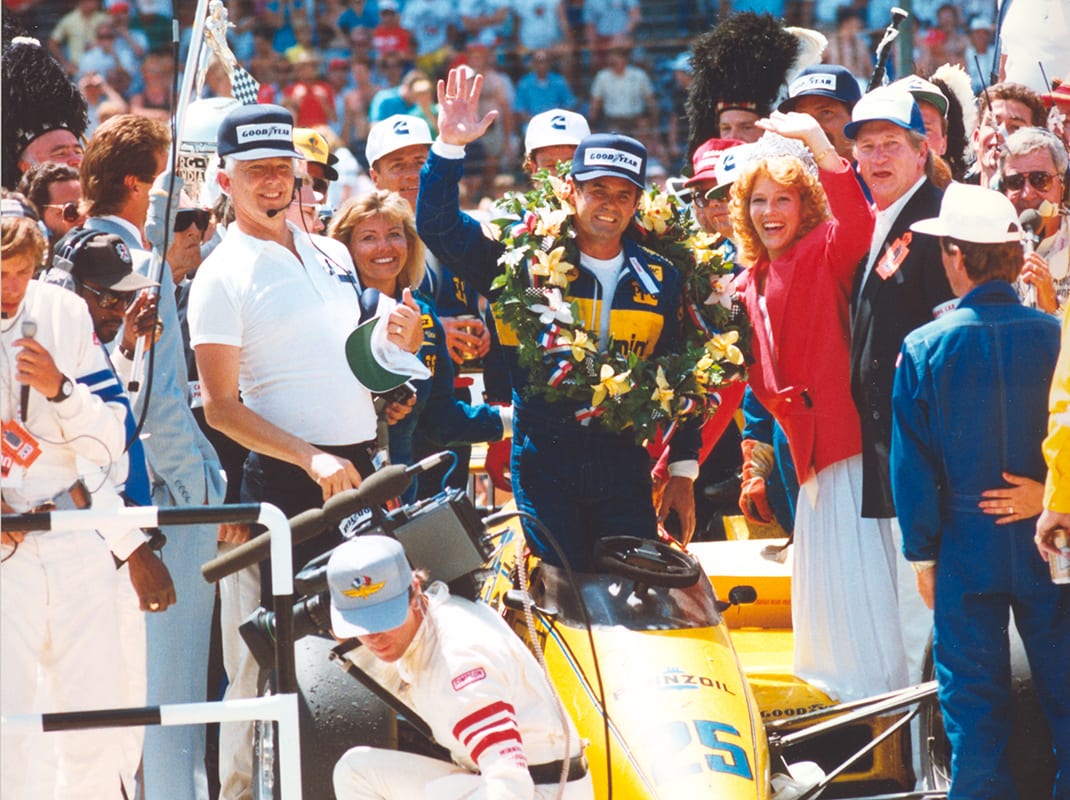He won the pole and led 190 of the 200 laps for his first Indianapolis 500 victory. The team returned strong the next year and won the Greatest Spectacle in Racing again.
Unser was a consistent contender until Jones pulled out of racing at the end of the 1977 season.
After being wooed by several teams, Unser joined Jim Hall’s new Chaparral team in 1978 and never missed a beat. Not only did he win his third Indianapolis 500, he topped the other two 500 milers (Ontario Motor Speedway and Pocono Raceway), becoming the only driver in history to win Indy car racing’s Triple Crown.
Ask any multiple Indianapolis 500 winner which was their most memorable win, and invariably they answer, “the first.” Unser is no different. However, his fourth 500 victory in 1987 is the one he rates as most satisfying, primarily because of the circumstances surrounding it.
The owner he accomplished that historic win with, Roger Penske, had fired him in 1984.
“I thought I was still competitive, but Roger felt he needed younger drivers,” Unser recalled. “I went home with my tail between my legs, I can tell you that. It was the hardest trip home I’ve ever made.”
The respect between the two men remained intact, however, and when Rick Mears shattered his legs at Canada’s Sanair Raceway in late 1984, Unser got the call to replace him. He responded by winning the 1985 CART championship.
In acknowledgement of this accomplishment, Penske provided Unser an Indianapolis entry in 1986. In 1987, however, he arrived at the speedway without a ride. He wasn’t without offers, but he only wanted something capable of winning the race.
Resigned to the possibility of missing his first 500 since 1969, fate intervened. Danny Ongais crashed his Penske ride and was injured so severely that he was out for the month. Penske turned to Unser.
But he still didn’t have a car and the clock was ticking. The new Penske chassis had underperformed and Penske had dumped his namesakes for 1986 Marches. They were in short supply, however. The only one available for Unser was sitting in a hotel lobby in Pennsylvania.
In typical Penske fashion, the team got the car to Indianapolis and quickly brought it up to spec. With only a few practice laps, Unser qualified 20th. Come race day, he still wasn’t completely comfortable with the car and as a result was tentative at the beginning of the race. Then Mario Andretti lapped him.
“That woke me up,” Unser said with a laugh. “I thought, ‘I’ll be a son of a gun.’ I told myself to pay attention and I went hard the rest of the day. When Mario fell out, it was me and (Roberto) Guerrero. He killed his engine on his last stop and it was mine.
“I ran as hard that day as I ever ran,” Unser said. “If I hadn’t, I wouldn’t have won. But that’s how my daddy raised me. Never give up. And when I raced I never quit until I saw the checkered flag.”
Unser saw the checkered flag for his Indianapolis career on May 17, 1994. He could have still been competitive. In 1992, he had stepped in for injured Nelson Piquet and gave John Menard and the delicate Buick engine it’s best finish — third — with a run at the end that nearly won the race.
But in his words, “It was time.”
Al Unser’s Indianapolis legacy remains one for the ages.
